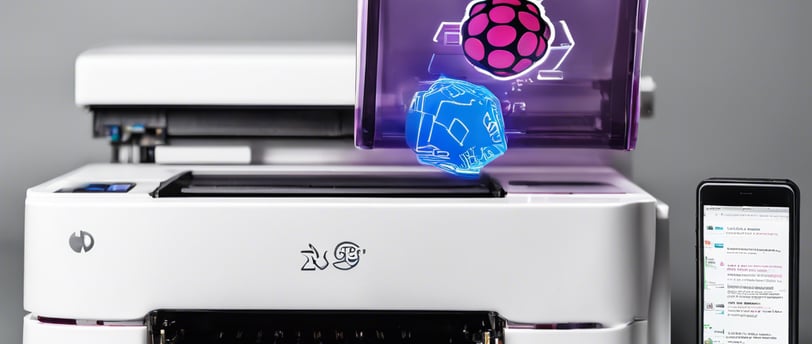Turning Your Raspberry Pi into a Print Server using CUPS and Pi OS
HOMELAB TIPS
3/24/20242 min read


Turning Your Raspberry Pi into a Print Server using CUPS and Pi OS
So, you've got a Raspberry Pi lying around and you're wondering what else you can do with it. Well, how about turning it into a print server? With the help of CUPS (Common Unix Printing System) and the Pi OS, you can easily set up your Raspberry Pi to handle all your printing needs. Here's a step-by-step guide to get you started.
Step 1: Install Pi OS
First things first, make sure you have the latest version of Pi OS installed on your Raspberry Pi. You can download the image from the official Raspberry Pi website and follow the instructions to install it on your Pi.
Step 2: Update and Upgrade
Once you have Pi OS up and running, open the terminal and run the following commands to update and upgrade your system:
sudo apt update
sudo apt upgrade
Step 3: Install CUPS
Now it's time to install CUPS. In the terminal, enter the following command: This will install CUPS along with all its dependencies.
sudo apt install cups
Fetch a cup of tea as you will need it :)
Setting Admin rights to the PI user if you changed user replace the <pi> with your username
sudo usermod -a -G lpadmin <pi>
Run the below to capture all the dependencies this fixes the filter failed issue in most instances
sudo apt install libcupsimage2
Step 4: Adding Printer Driver
After the installation is complete, we need to configure CUPS to work with your printer.
For mine I am using the Rollo Printer (Thermal)
wget https://www.rollo.com/driver-dl/beta/rollo-driver-raspberrypi-beta.zip
unzip rollo-driver-raspberrypi-beta.zip
sudo sh install.run
replacing the Url and the Zip file if your using a different solution than mine
Step 5: Allow remote admin to cups
sudo cupsctl --remote-admin --remote-any --share-printers
sudo /etc/init.d/cups restart
Step 6: Access the CUPS Web Interface
To access the CUPS web interface, open your web browser and enter the following URL: ``` http://localhost:631 ``` You should see the CUPS web interface, where you can manage your printers and print jobs.
Step 7: Adding a printer
Follow the steps on this video
Need a Pi Project? - How about a Print Server! (youtube.com)
Step 8: Test Printing
Finally, it's time to test your print server. Open a document on your computer and try to print it. Make sure you select the correct printer that you added in CUPS. If everything is set up correctly, your Raspberry Pi should now act as a print server, allowing you to print wirelessly from any device on your network.
Conclusion
Turning your Raspberry Pi into a print server using CUPS and Pi OS is a great way to repurpose your Pi and make it a useful addition to your home or office setup. By following the steps outlined above, you'll be able to set up your own print server in no time. Happy printing!
